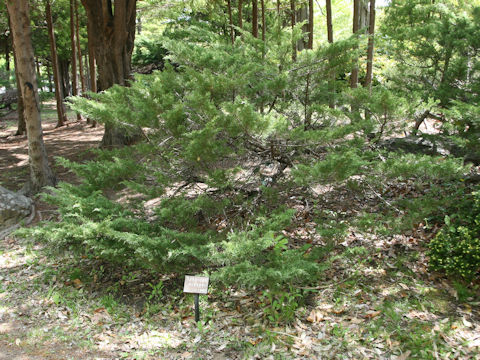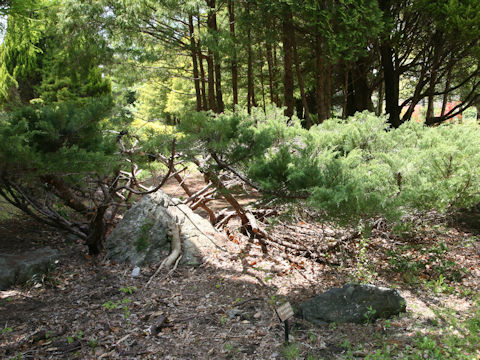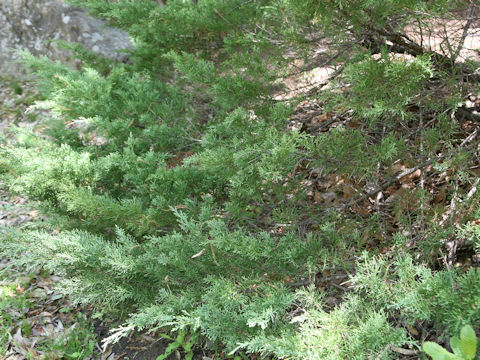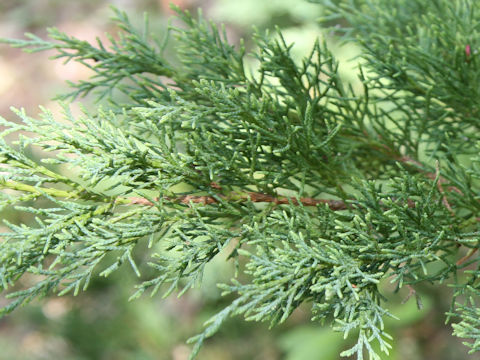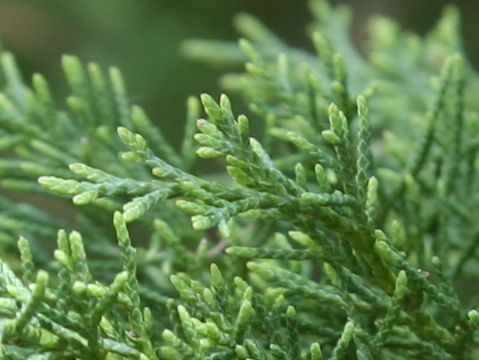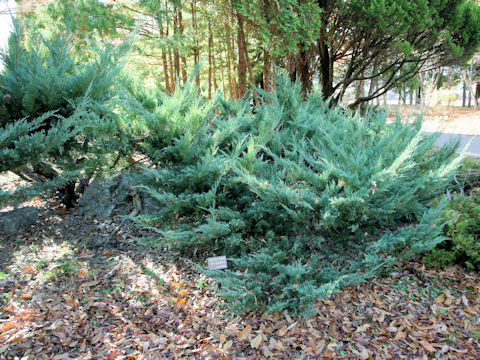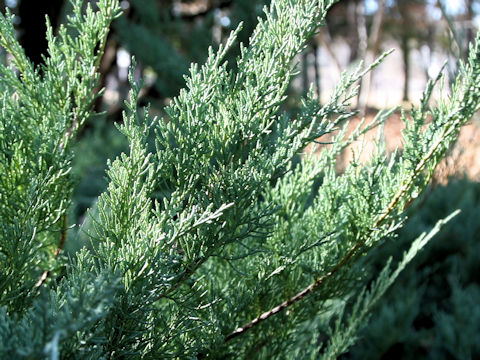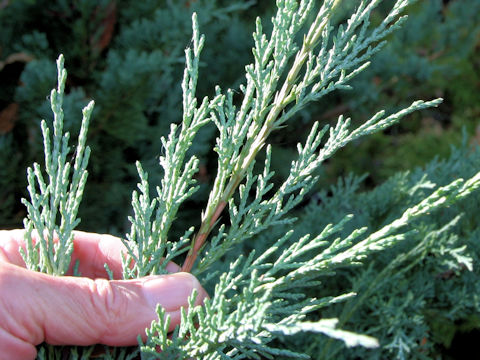
|
The Creeping juniper (Juniperus horizontalis) belongs to Cupressaceae (the Cypress family). It is a small evergreen tree that is native to northern North America, it is found in most of Canada and in the northern United States and Alaska. It grows on open hillsides, in eroded areas, and in open forests, and is 15 to 45 cm tall. The branches grow in all directions with drooping tips, and when the stems contact the ground, they root from the nodes and spread in a creeping manner. The leaves are blue-green to grayish-blue, scale-like, and pointed at the tip. The leaves are needle-like on young trees and gradually become more scaly as the tree grows, with a mixture of needle and scale leaves. The leaves also turn reddish purple in winter. It is dioecious and produces single female and male flowers at the ends of each branch in early spring. The male flowers are ovate and light brown, while the female flowers are scaly, spherical and light reddish brown. The fruit is a spherical cone that matures in 18 months and is grayish blue with a waxy coating. Many horticultural varieties are available and are grown for ornamental purposes. The photo shows the horticultural variety 'Youngstown'.
|
